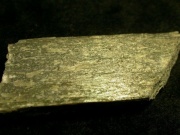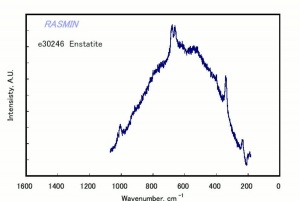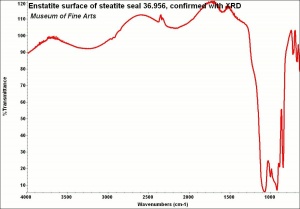Difference between revisions of "Enstatite"
Jump to navigation
Jump to search
m (Text replace - "== Authority ==" to "== Sources Checked for Data in Record ==") |
|||
| Line 29: | Line 29: | ||
|} | |} | ||
| − | == | + | == Sources Checked for Data in Record == |
* Wikipedia, the free encyclopedia, at http://www.wikipedia.com Comment: http://en.wikipedia.org/wiki/Enstatite (Accessed Nov. 2, 2005) | * Wikipedia, the free encyclopedia, at http://www.wikipedia.com Comment: http://en.wikipedia.org/wiki/Enstatite (Accessed Nov. 2, 2005) | ||
Revision as of 21:14, 30 April 2016
Description
A pyroxene mineral composed of magnesium silicate. Enstatite was first described by G.A. Kenngott in 1855. It occurs naturally in metamorphic rocks and meterorites. The mineral is usually a gray, pale green, or brown in color although a gemstone quality emerald green variety occurs rarely. Weathered enstatite can have a metallic luster and is called bronzite. Enstatite can alter to form Steatite. Steatite may also be heated to form enstatite.
Synonyms and Related Terms
bronzite; Enstatit (Deut.); enstatiet (Ned.)
Other Properties
Orthorhombic crystal system .
| Composition | MgSiO3 |
|---|---|
| Mohs Hardness | 5-6 |
| Density | 3.21-3.96 |
| Refractive Index | 1.650-1.788 |
Sources Checked for Data in Record
- Wikipedia, the free encyclopedia, at http://www.wikipedia.com Comment: http://en.wikipedia.org/wiki/Enstatite (Accessed Nov. 2, 2005)


